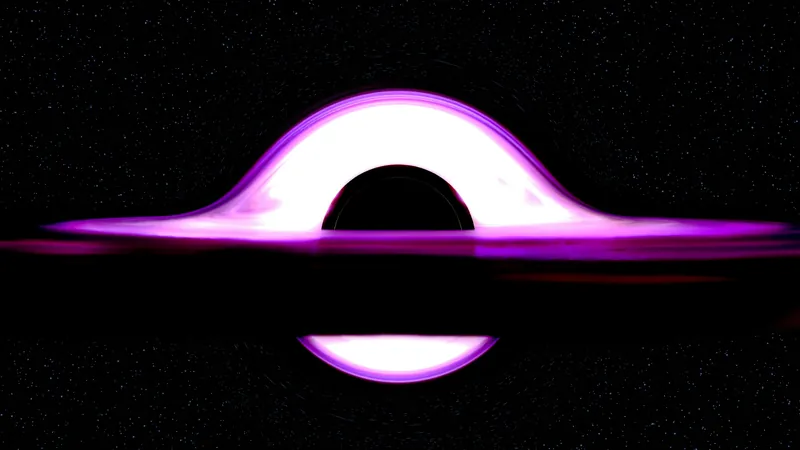
A Miniature Marvel: The Quest to Send a Paperclip-Sized Spacecraft to a Black Hole
2025-08-12
Author: Mei
Exploring the Cosmos: A Bold Vision for the Future
Imagine a spacecraft smaller than a paperclip embarking on a journey to probe a black hole! An exciting vision laid out by astrophysicist Cosimo Bambi from Fudan University, Shanghai, presents a revolutionary concept for exploring the intricate physics surrounding these cosmic enigmas. According to Bambi, this tiny craft, weighing no more than a gram, could be launched within the century, potentially reaching our nearest black hole at a staggering one-third the speed of light, powered by Earth-based lasers.
The Blueprint: Science Fiction or Future Reality?
Published in the journal iScience, Bambi’s ambitious blueprint may sound like science fiction, but he draws inspiration from past breakthroughs in astrophysics. He noted, 'People once thought we could never detect gravitational waves or see the shadows of black holes. Yet here we are, breaking those barriers!' Although the technology required does not yet exist, Bambi believes in preparing for future possibilities.
Unlocking the Mysteries of Black Holes
Black holes, created by the collapse of massive stars, continue to captivate scientists. These cosmic voids devour everything—gas, dust, even other stars—within their grasp. They present intriguing phenomena known as space-time ruptures, regions where Einstein's gravitational theories break down. Studying such areas could lead to groundbreaking discoveries, potentially unifying gravity and particle physics.
A Race Against Distance: Finding a Nearby Black Hole
However, the first hurdle is locating a black hole within our cosmic neighborhood. Currently, the nearest one lies 1,500 light-years away—far beyond our reach. Bambi hints at innovative gravitational microlensing techniques that could unveil smaller black holes nearby. He optimistically claims, 'We could discover one within 25 light-years in the coming decade!'
The Journey: Crafting a Nanocraft for the Stars
Once a sufficiently close black hole is found, Bambi envisions a solar sail measuring 108 square feet, propelled at speeds of 224 million mph. This nanocraft could traverse the distance to the black hole in roughly 70 years, entering orbit before releasing a probe to gather critical data. Although the initial costs of such a venture might exceed a trillion dollars, advancements in technology could drastically lower expenses over time.
Looking Ahead: A Leap into the Unknown
Bambi remains optimistic, asserting, 'While we don’t have the technology now, we might in the next 20 or 30 years.' The quest to understand black holes not only broadens our scientific horizons but also serves as a testament to human innovation and ambition. If successful, this mission could unlock secrets of the universe we have yet to imagine! Stay tuned as we hover on the brink of incredible cosmic discoveries.



 Brasil (PT)
Brasil (PT)
 Canada (EN)
Canada (EN)
 Chile (ES)
Chile (ES)
 Česko (CS)
Česko (CS)
 대한민국 (KO)
대한민국 (KO)
 España (ES)
España (ES)
 France (FR)
France (FR)
 Hong Kong (EN)
Hong Kong (EN)
 Italia (IT)
Italia (IT)
 日本 (JA)
日本 (JA)
 Magyarország (HU)
Magyarország (HU)
 Norge (NO)
Norge (NO)
 Polska (PL)
Polska (PL)
 Schweiz (DE)
Schweiz (DE)
 Singapore (EN)
Singapore (EN)
 Sverige (SV)
Sverige (SV)
 Suomi (FI)
Suomi (FI)
 Türkiye (TR)
Türkiye (TR)
 الإمارات العربية المتحدة (AR)
الإمارات العربية المتحدة (AR)